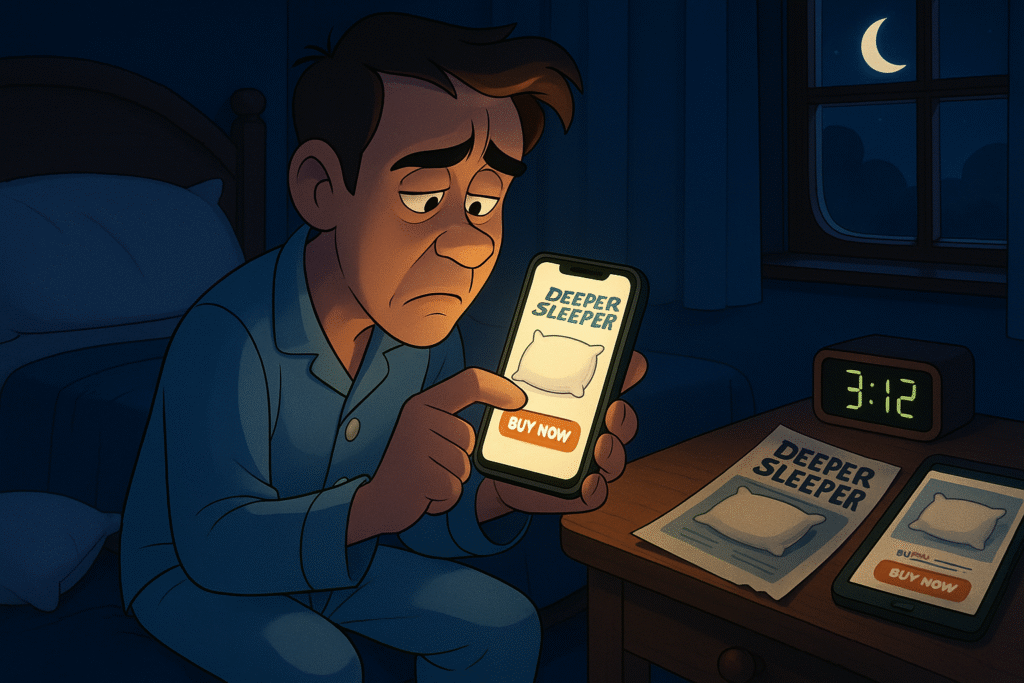
A sharp reader asked an excellent question after my last email about trigger moments:
“If you nail the perfect timing, does that mean less exposure is necessary before conversion?”
This goes to the heart of marketing efficiency.
The short answer: Yes, usually — but with an important caveat.
Our analytics DO consistently show that trigger-driven purchases convert faster when there’s direct pain and urgency.
Someone searching for “emergency plumber” at 2 AM with water pooling on their kitchen floor isn’t comparison shopping very much. They’re buying immediately. They’ll check a few reviews, but mostly want to know who is competent and can come FAST.
But here’s the neat part – even these urgent, trigger-driven purchases very often show multiple touch points and repeat store visits pre-purchase.
The prospect with the flooded kitchen may have visited plumbing service sites 3-4 times previously for other fixes or (foolishly) putting this one off. Those touch points leave a mark.
The sleepless customer buying the Parallel Pillow at 3 AM? They’ve often viewed the product page at least twice before completing that middle-of-the-night purchase.
In I Need That, I explore how the dog brain (our emotional decision-making system) and tank brain (our analytical side) interact during purchases. Even when urgent triggers activate the dog brain, the tank brain has usually been quietly collecting information in the background.
This creates what I call the “recognition-familiarity-action” sequence:
First exposure: “That’s interesting” (Recognition of solution)
Second exposure: “I remember seeing this” (Familiarity)
Third exposure + trigger: “I need that now” (Action)
The trigger moment doesn’t eliminate the need for multiple exposures.
It capitalizes on them.
This explains why remarketing campaigns consistently outperform cold targeting. The prospect who abandons a cart and then sees your ad during their trigger moment is exponentially more likely to convert than someone seeing your product for the first time, even in identical circumstances.
You’ve got to stack your tactics.
Product Payoff: Music giant Spotify brilliantly combines repetition with trigger timing in its premium subscription marketing. They initially build awareness through free-tier usage, then strategically target upgrade offers during high-friction moments — like when users hit skip limits, encounter ads during workout playlists, or try to download music for travel.
By layering these precisely timed buyer prompts on top of months of product familiarity, they’ve achieved a remarkable 46% conversion rate from free to paid users. This approach shows how familiarity (repeated exposure to the product) combined with perfect timing (targeting pain points) yields the ideal conversion environment. (Believe you me, they’ve optimized it.)
Action for today: Audit your current marketing funnel to ensure you’re building both awareness and trigger responsiveness. Map out at least three typical exposures your prospect might have with your brand before purchase, then identify how you can recognize and capitalize on their trigger moment when it arrives.
The goal isn’t to choose between repetition and timing, but to create a system where repetition makes your trigger-based marketing dramatically more effective.
Have you noticed the “third time’s a charm” principle in your own purchasing behavior? How many times do you typically encounter a product before buying? Tap that reply arrow and share your observations.
And I ALWAYS write back.
Or reach out to my amazing team of conversion specialists at Graphos Product.
